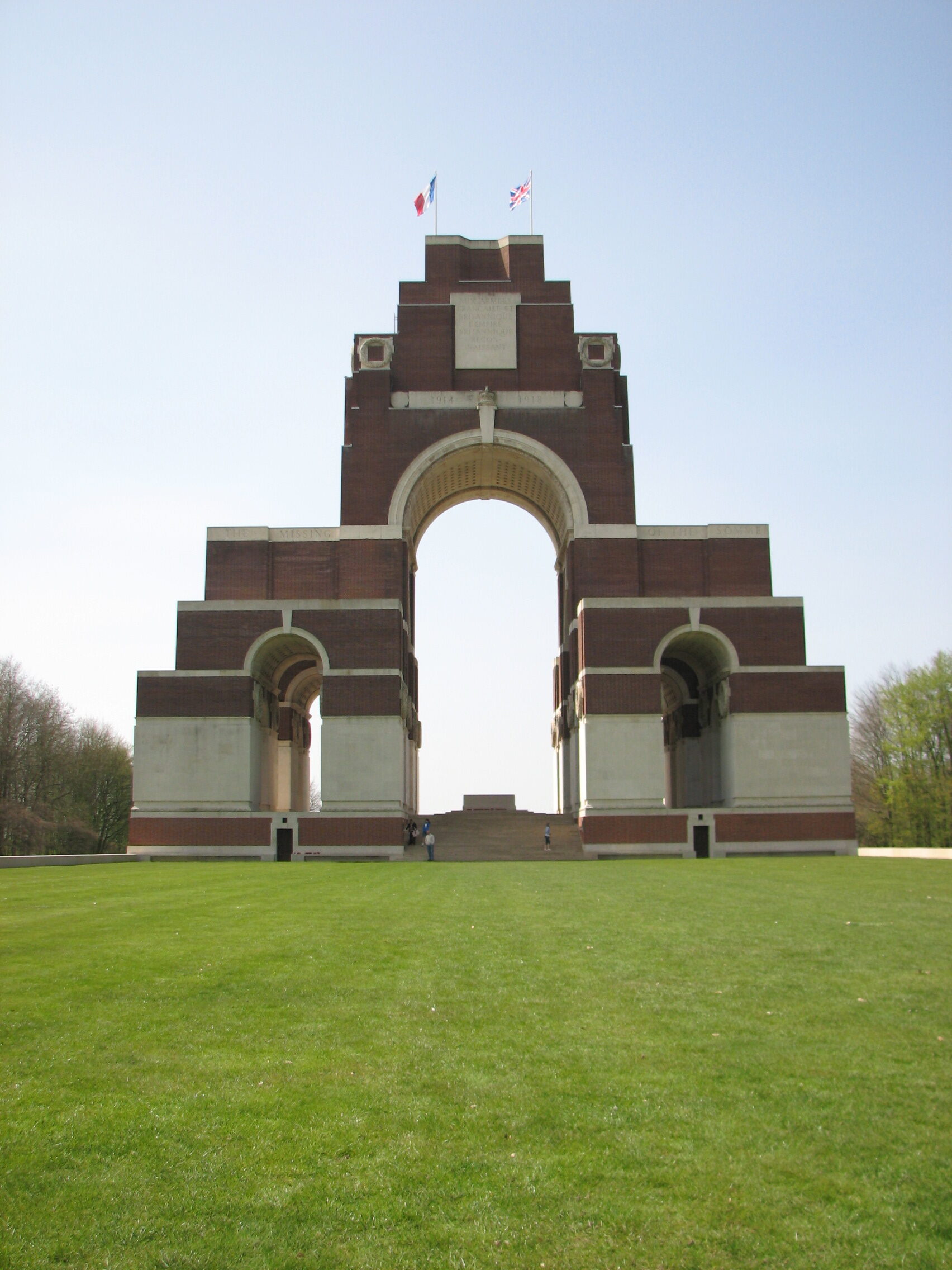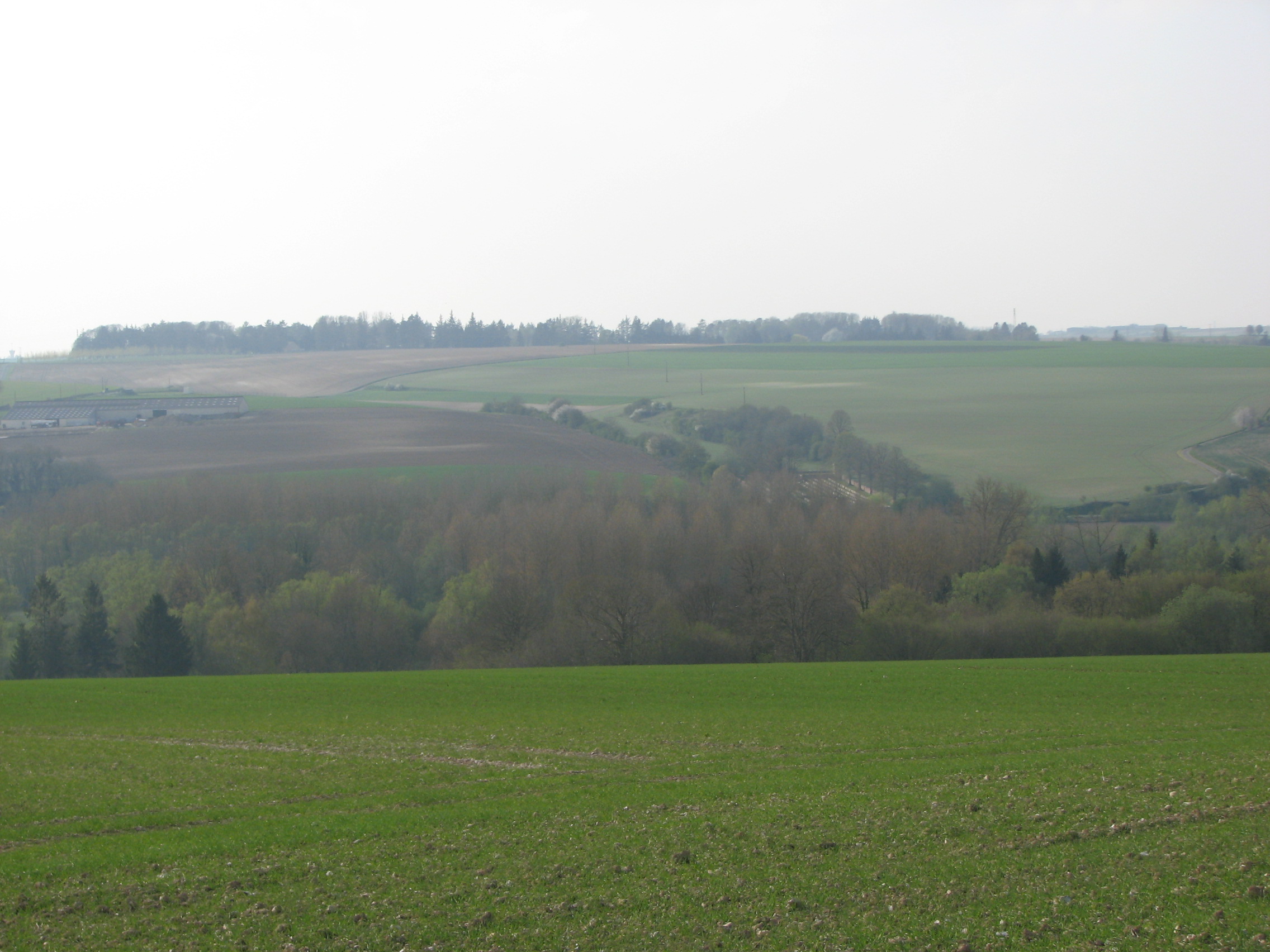William Gardner (1880 - 1916)
William’s parents lived in East Bergholt, though it is quite possible that he never did. A veteran of the Boer War, William rejoined the Army in 1914 and was killed in action during the Battle of the Somme.
- 35
- Died in the Great War
- 51.972414, 1.035391
Details
| Name: | William Arthur Gardner |
| Service: | British Army |
| Unit: | 17th Battalion, Sherwood Foresters (Nottinghamshire and Derbyshire Regiment) |
| Regimental Number: | 7042 |
| Rank: | Lance Corporal |
| Date of Death: | 3rd September 1916 |
| Age: | 36 |
| Commemorated: | Face C of Pier 10, Thiepval Memorial, France |
Family Background and Early Life
William Gardner was born in Upton St Leonards, near Gloucester on 7th February 1880, the first child of William and Louisa Gardner. The elder William, who had been born in nearby Painswick, was a Labourer at the time of his first child’s birth. He had married Louisa Davis, who was from Upton St. Leonards, and their marriage would produce 7 children, of whom 5 were still alive in 1911.
Shortly after the younger William’s birth, the family moved to a village near Cheltenham called Charlton Kings.
The family appear to have moved frequently in the mid to late 1880’s, living in at least 2 places in Gloucestershire and also at Abergavenny, in Monmouthshire. By 1891, they were living at Brimpsfield in Gloucestershire and William’s father was employed as a Coachman.
Second Boer War and After
After leaving school, William joined the British Army, and served for a time as a Private in the 2nd Battalion of the South Wales Borderers Regiment. He saw service with the Battalion during the Second Boer War (1899 to 1902), in the Cape Colony and the Orange Free State. William later claimed to have resigned from the Regiment, but there is some evidence to suggest that he may have been invalided out.
By April of 1911, William was living in Chesterfield, Derbyshire where he was employed on the railway as a Shunter. 1 A Shunter was responsible for driving a small locomotive which was used for moving carriages around, rather than making journeys. By September 1914, William had been promoted to the role of Head Shunter and was employed by the Midland Railway.
At some point between 1901 and 1911, William’s parents had moved to East Bergholt, where they lived in Highlands Cottages. 2 There is no documentary evidence that William actually lived in East Bergholt, and given that he had left home some years before it is likely that he never did. However, it is distinctly possible that William may have visited his parents whilst they were living in the village. The older William was employed as a Gardener by Colonel Peel, who lived at Highlands.
Re-joins the Army
William volunteered to join the local Derbyshire regiment, the Sherwood Foresters (Nottinghamshire and Derbyshire Regiment) on 9th September 1914. 3 It is interesting to note that William joined the Army in 1914 using the surname Gardener. His birth had been registered in the name of Gardner, and this is the variation used in all other surviving documents, except those relating to his second period of Army service. This was just over a month after Great Britain had declared war on Imperial Germany following the latter’s invasion of neutral Belgium.
His surviving Service Papers tell us that William was 5 foot 5 inches tall, and weighed 143 lbs.
William spent the next year and a half in Army camps, initially in the south of England and later in Staffordshire.
On 16th March 1916, William was sent overseas to join the Regiment’s 10th Battalion, which was serving in near the Franco-Belgian border as part of the British Expeditionary Force (B.E.F.). William remained with the 10th Sherwood Foresters for just under 2 months, before he was transferred to the Regiment’s 17th Battalion in mid-May.
The 17th Sherwood Foresters – who were nicknamed the Welbeck Rangers – had been in France since March of 1916, as part of the 39th Division. From mid-May to early August, the Battalion were located in the area west of the town of Bethune. When in the line, they were manning parts of the Givenchy or Festubert sectors.
William was appointed a Lance Corporal in early June, and at some point in the next 5 weeks he was wounded. The exact nature of William’s wounds are not known, but they were not serious as he was back with the Battalion by the end of August at the very latest.
The Battle of the Somme
In early August, the Battalion commenced a period of training, and also a series of moves to the south. The Anglo-French offensive now known as the Battle of the Somme had been ongoing since 1st July, and the 17th Sherwood Foresters were to be committed to it.
On 3rd September 1916, the British launched an attack from that section of the line astride the River Ancre, in front of the village of Hamel. This had been the scene of attacks on 1st July – the first day of the Battle – which had been beaten back with heavy losses. Since then, this particular part of the Somme front had been comparatively quiet.
The attack on the north side of the river would be made by 39th Division, with the 17th Sherwood Foresters occupying the extreme left of the battle front.
Another man taking part in the same attack was Arthur Cousins, from East Bergholt. 4 Private Arthur Cousins, of the Machine Gun Corps, was killed in action during the attack on 3rd September 1916, aged 26. Arthur has no known grave and is commemorated on the Thiepval Memorial, and the East Bergholt War Memorial.
The attack was launched at 5.10 am. The distance between the British and German lines was greatest where the 17th were to attack. The result was that the Battalion had not had time to reach the German trenches, by the time that the British artillery barrage lifted. This gave the Germans time to ready themselves to repel the attack. Within the space of 4 minutes, the Battalion’s A and C Companies had lost half of their men, whilst B Company lost three quarters. A party of men from the 17th were able to occupy the German front line trench, and held on for over an hour before any reinforcements arrived.
The German 2nd line was strongly defended with bombs (hand grenades), machine guns and supported by artillery. At 2.00 pm, orders were issued for the survivors of the 17th still holding the German front line to withdraw back to the British trenches.
The 17th Sherwood Foresters had numbered 670 men before the attack: By the end of it 451 of them had become casualties, of whom one third were dead. William was one of those who had been killed.
The attack was a failure. Nothing had been achieved and the 39th Division as a whole suffered over 2,800 casualties, including 1,200 men killed or missing.
William has no known grave, and is officially commemorated on the Thiepval Memorial. This Memorial to the Missing of the Somme contains the names of over 72,000 officers and men of the United Kingdom and South African forces who died in the Somme sector before 20th March 1918, and have no known grave.
Copyright © Mark Ashmore, 2024
- 35
- Died in the Great War
- 51.972414, 1.035391




